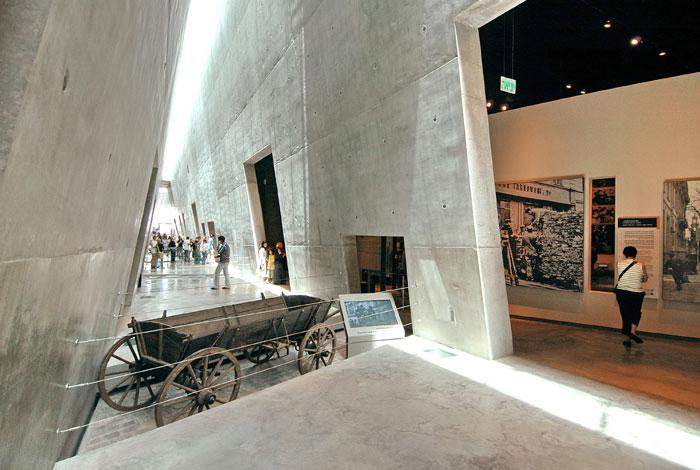
The new Holocaust History Museum's nine underground galleries tell the story of the Shoah from the point of view of the Jews. The chronological and thematic narrative is punctuated by a look into the worlds of Jews who lived - and died - under the Nazis and their collaborators. The exhibits incorporate a wide variety of original artifacts, testimonies, photographs, documentation, art, multimedia, and video art.

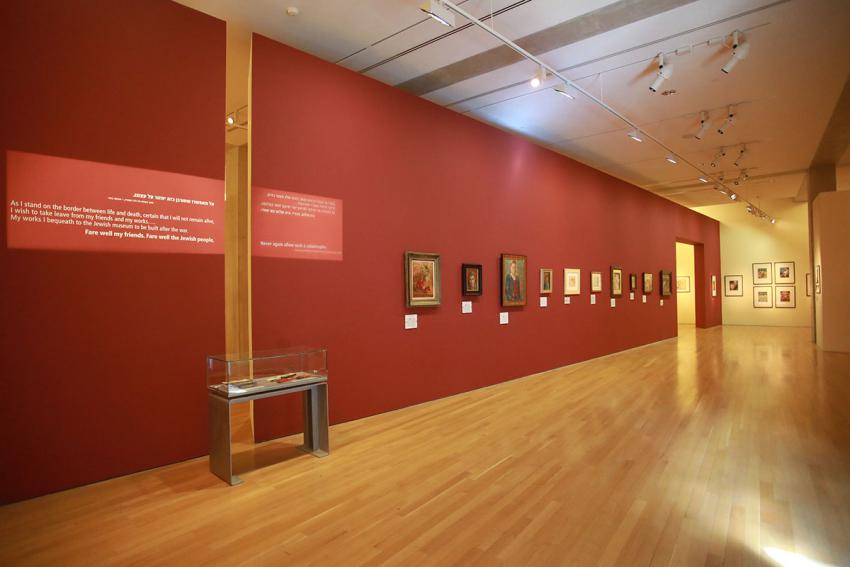
The new Holocaust Art Museum exhibits the world's largest collection of art created in ghettos, camps, hideouts, and other places where artistic endeavor was nearly impossible. These works reflect the very spirit of the victims and survivors. The Holocaust Art Museum also contains the world's first computerized archive and information center regarding Shoah art and artists.

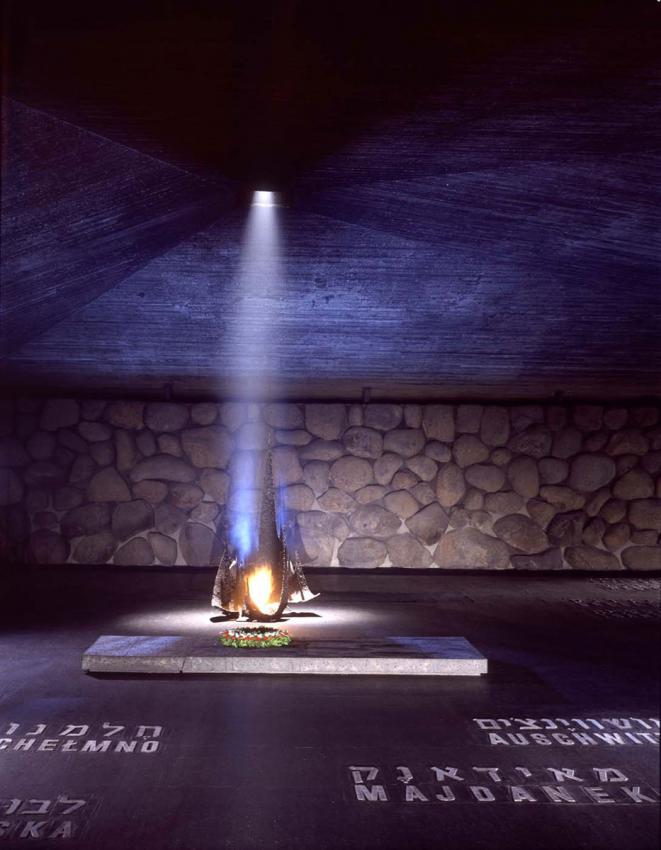
An imposing, tent-like basalt structure that allows visitors to pay their respects to the memories of the martyred dead. On the floor are the names of 22 Nazi murder sites - extermination and concentration camps, transit camps and killing sites - chosen from the hundreds of murder sites that existed throughout Europe. A memorial flame burns continuously, next to a crypt containing ashes of victims brought from the extermination camps.

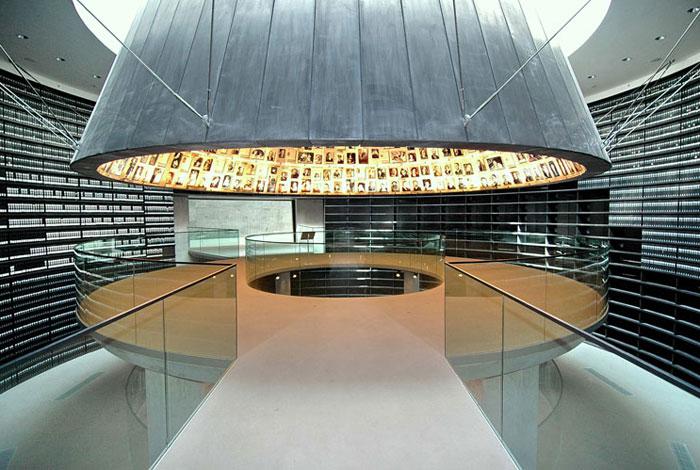
The names and personal details of millions of victims have been recorded on Pages of Testimony, symbolic tombstones filled out by survivors in memory of their loved ones, and preserved in the Hall of Names. In an ongoing effort to collect more names before it is too late, Yad Vashem asks the public to assist in this sacred mission.

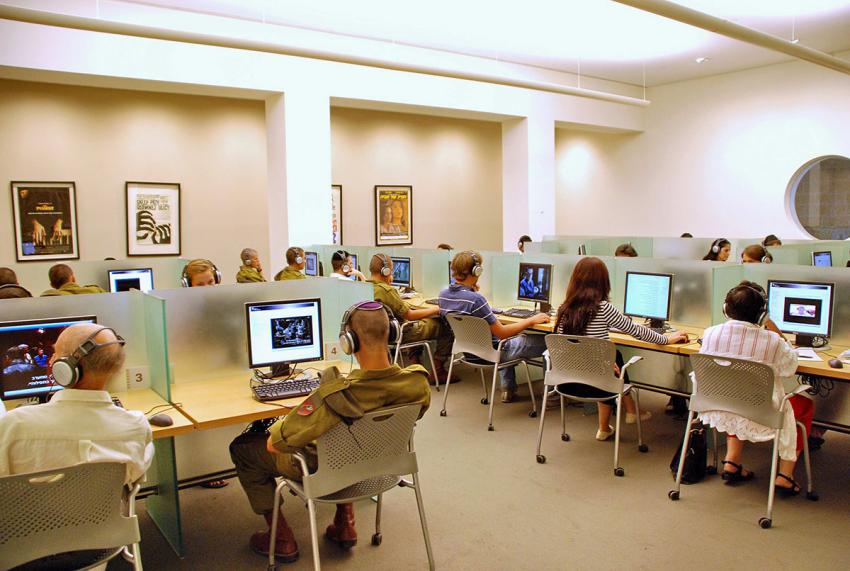
The Visual Center enables groups or individuals to view Shoah-related visual materials on large or personal screens. These include documentaries, feature films, and survivor testimonies taken by Yad Vashem and other organizations. Prominent among these is the Visual History Collection of the Survivors of the Shoah Visual History Foundation

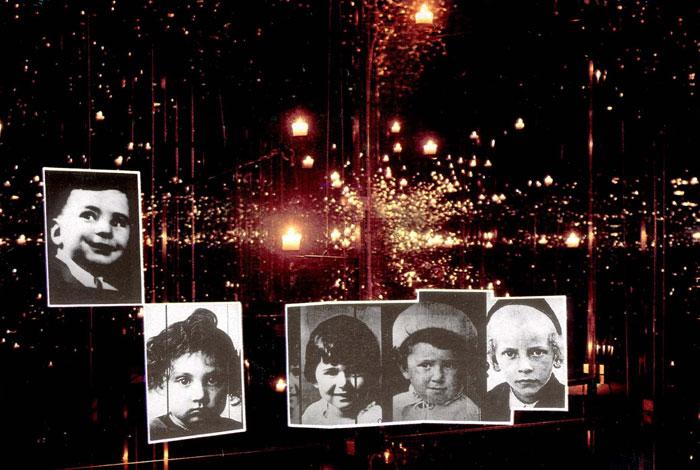
This unique memorial, hollowed out from an underground cavern, is a tribute to the approximately 1.5 million Jewish children who perished during the Holocaust. Walking through the memorial, the visitor will hear the names of murdered children, their ages and countries of origin in the background.

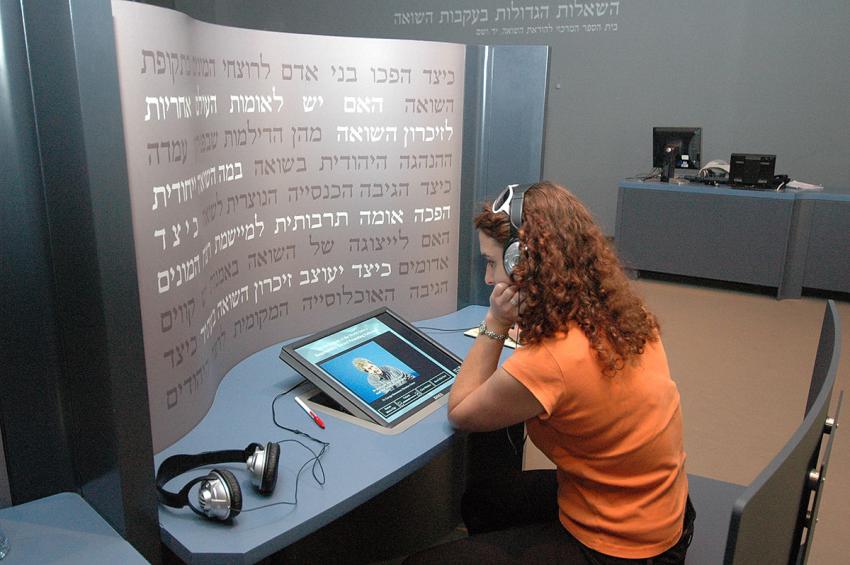
The Learning Center allows visitors to explore historical, thematic, and moral dilemmas and issues related to the Shoah. Through directed and independent learning, computer stations provide access to a wide range of information from internationally recognized historians, philosophers, and Yad Vashem's knowledge base. The Learning Center is open to organized groups, independent groups, and individuals.

The new Synagogue is a fitting place for visitors to say Kaddish for departed loved ones, for private prayer, communal worship, and memorial services for lost communities. Ritual artifacts rescued from destroyed synagogues in Europe adorn the building.
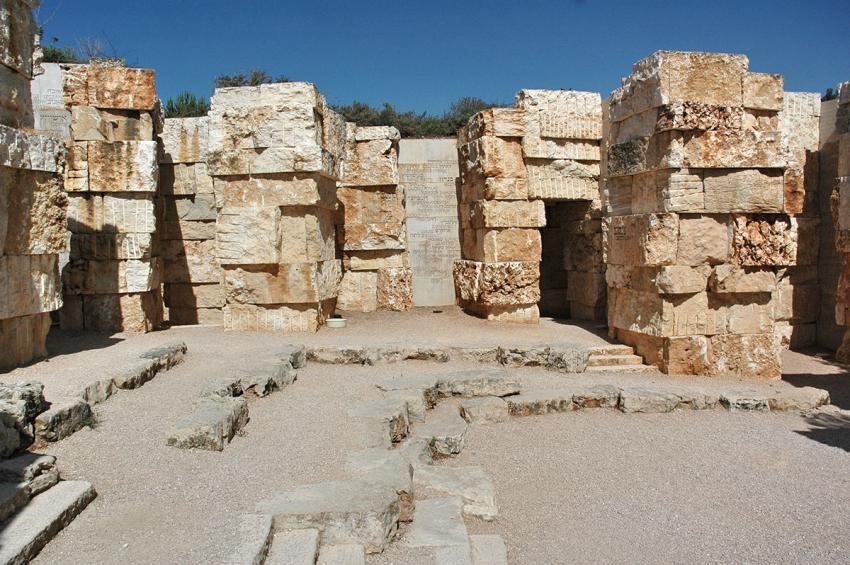
The Valley is a massive 2.5 acre monument literally dug out of the natural bedrock. The names of over 5,000 Jewish communities that were destroyed or barely survived in the Holocaust are engraved on its 107 walls. In the center of the monument stands Beit Hakehillot, which houses a gallery for temporary exhibitions. Visitors can also see a short film there, depicting the world that was.







